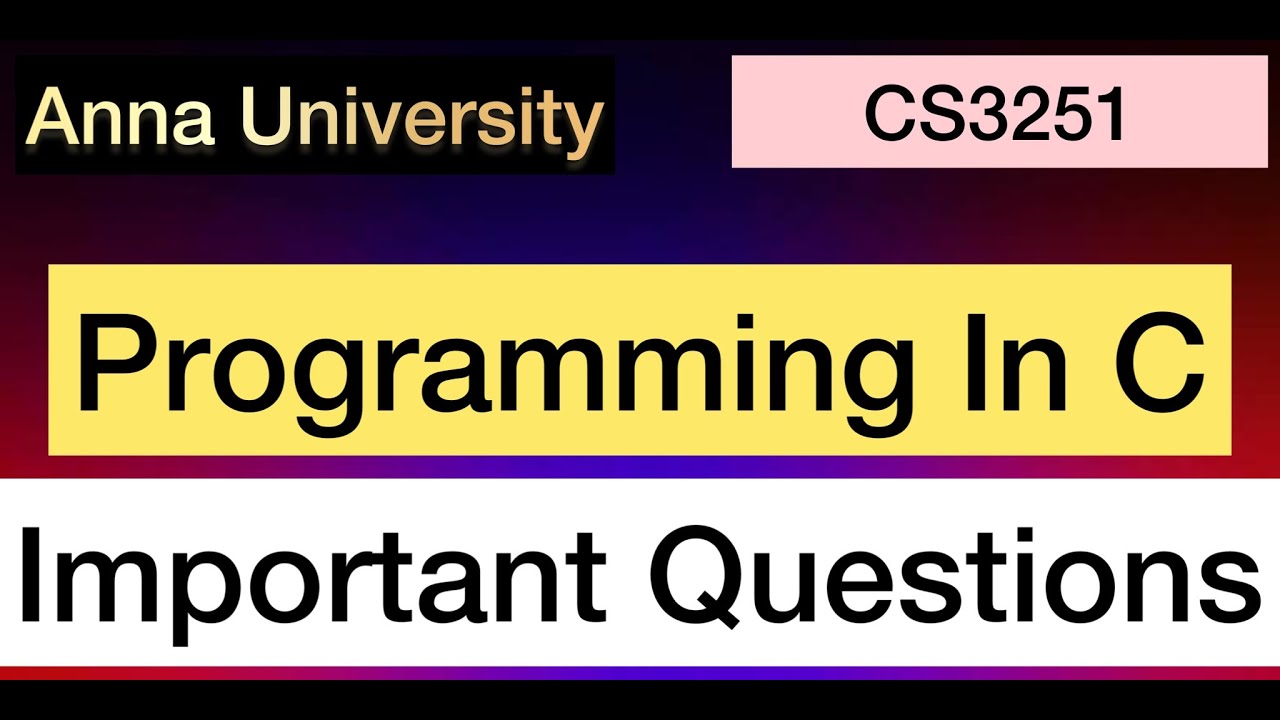How C++ Works
Summary
TLDRThis video provides an introductory overview of the C++ compilation and linking process. It explains how source files are compiled into object files, which are then linked together to form an executable. The video highlights the role of the compiler and linker, including handling unresolved external symbols, such as the 'log' function, and ensuring proper function definitions. Viewers will gain a basic understanding of how the C++ build process works, from source code to final executable, with a focus on the linker’s role in resolving references between different object files.
Takeaways
- 😀 The process of compiling and linking in C++ involves turning source files into an executable by converting them into object files first.
- 😀 The compiler creates object files (.obj) for each source file (.cpp) during the compilation process.
- 😀 Linkers resolve symbols (like functions and variables) and combine object files into a single executable (.exe).
- 😀 An unresolved external symbol error occurs when the linker cannot find a function definition for a referenced function in the code.
- 😀 The 'log' function in the example is referenced but not defined, causing the linker error that prevents the program from compiling.
- 😀 To fix the linker error, you need to provide a definition (or body) for the 'log' function, even if it's located in a separate file.
- 😀 The object files generated by the compiler contain machine code, and the linker combines them into a final executable binary.
- 😀 The linker ensures that all functions and variables are properly wired up to each other in the final executable.
- 😀 The concept of linking and symbol resolution is crucial to understanding how separate code files work together to form a program.
- 😀 The video provides a high-level overview of compiling and linking in C++ and encourages further exploration through in-depth resources.
Q & A
What is the role of the preprocessor in C++?
-The preprocessor handles directives like `#include`, which allows the program to include external files or libraries. It processes the code before the actual compilation, ensuring that necessary definitions and declarations are available to the compiler.
What happens when you encounter an unresolved external symbol in C++?
-An unresolved external symbol error occurs when the linker cannot find the definition for a declared function or variable. This typically happens if you declare a function in a header or another file but don't provide its implementation, causing the linker to fail when it tries to wire everything together.
How does the linker resolve references between different files?
-The linker combines object files generated by the compiler, resolving references between them. It ensures that functions or variables declared in one file and used in another are correctly linked, creating a final executable. If any references cannot be resolved, the linker throws errors.
What is the difference between compilation and linking in C++?
-Compilation is the process where the compiler translates source code into object files (.obj), handling syntax and language-specific checks. Linking, on the other hand, takes these object files and combines them into a single executable, resolving any cross-file references and ensuring the program runs correctly.
What causes a 'log' function to cause an unresolved external symbol error?
-If you declare a function like `log` but don't provide a definition (body) for it, the linker won't be able to resolve the reference in `main` when it tries to call `log`. To fix this, you need to provide a function body or ensure the definition is available to the linker.
What does the linker do with object files?
-The linker takes the object files (.obj) produced by the compiler for each source file and combines them into a single executable. It ensures that all function calls, variable references, and other inter-file dependencies are properly resolved.
What is the purpose of the main function in a C++ program?
-The `main()` function is the entry point of a C++ program. When the program is executed, it begins execution from `main()`, making it essential for starting the program's flow.
Why does the compiler generate an object file for each source file?
-Each `.cpp` file is compiled separately into an object file because it allows for modular development. Object files can be independently compiled and later linked together, making it easier to manage larger projects and speed up the compilation process.
What is the final output of the compilation and linking process in C++?
-The final output of the compilation and linking process is an executable binary file (e.g., `hello_world.exe`). This file contains all the compiled and linked code from all source files and is ready to be executed by the operating system.
How can you prevent linker errors related to unresolved external symbols?
-To avoid unresolved external symbol errors, ensure that all declared functions and variables have corresponding definitions. Check that all necessary object files or libraries are correctly included in the linking process and that no declarations are left undefined.
Outlines

Cette section est réservée aux utilisateurs payants. Améliorez votre compte pour accéder à cette section.
Améliorer maintenantMindmap

Cette section est réservée aux utilisateurs payants. Améliorez votre compte pour accéder à cette section.
Améliorer maintenantKeywords

Cette section est réservée aux utilisateurs payants. Améliorez votre compte pour accéder à cette section.
Améliorer maintenantHighlights

Cette section est réservée aux utilisateurs payants. Améliorez votre compte pour accéder à cette section.
Améliorer maintenantTranscripts

Cette section est réservée aux utilisateurs payants. Améliorez votre compte pour accéder à cette section.
Améliorer maintenant5.0 / 5 (0 votes)






